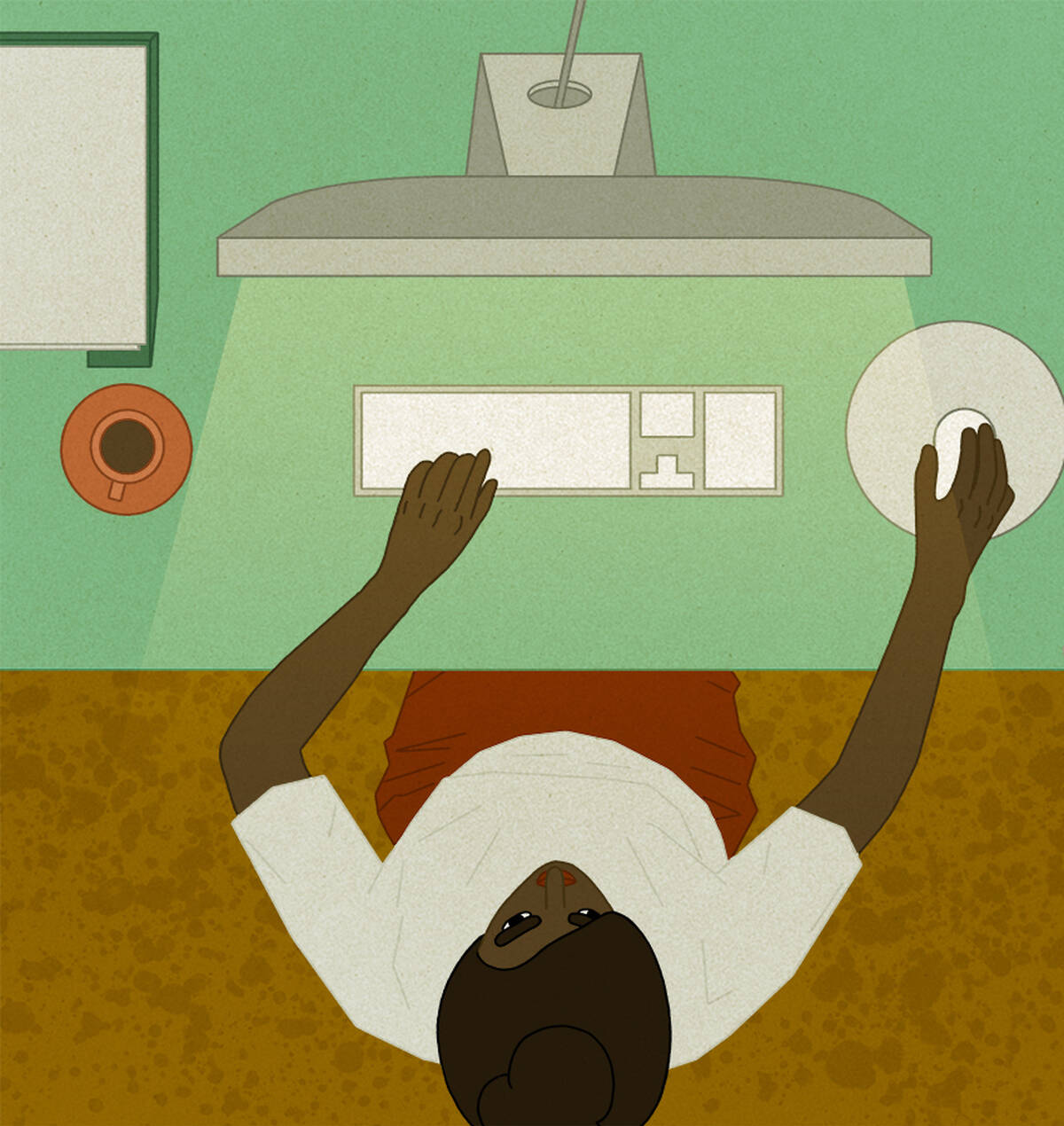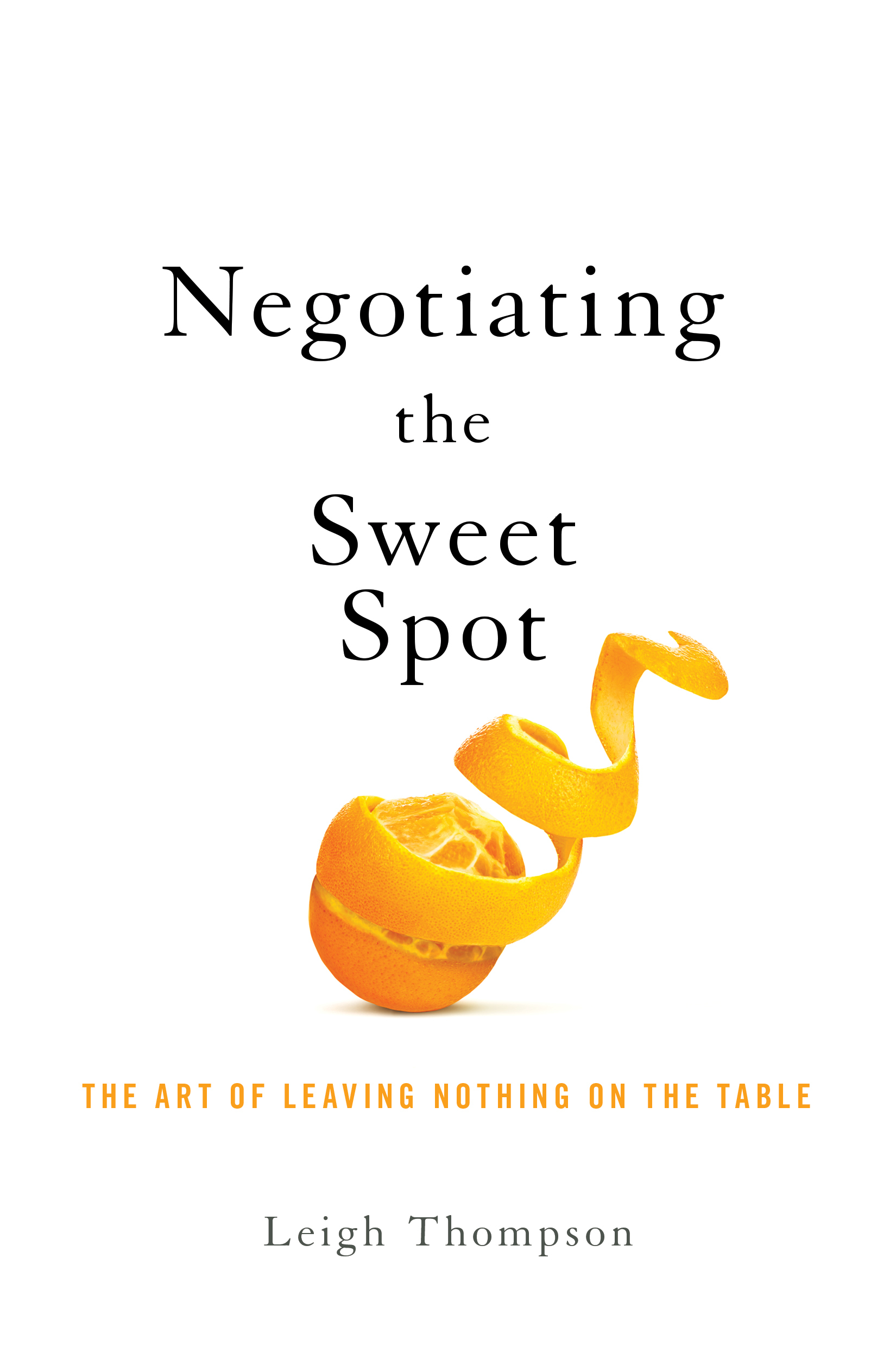Featured Faculty
J. Jay Gerber Professor of Dispute Resolution & Organizations; Professor of Management & Organizations; Director of Kellogg Team and Group Research Center; Professor of Psychology, Weinberg College of Arts & Sciences (Courtesy)

Across most of the world, face-to-face negotiations—with your boss, with a colleague, or with customers and clients—have been replaced by Zoom invitations and Teams meetups.
Oh, and a lot more email.
In this “new normal” of primarily virtual work interactions, composing an effective and persuasive email has never been more important. But does your e-communication deliver? Or do recipients wind up unresponsive, miffed, or unmoved?
Leigh Thompson, a professor of management and organizations at Kellogg, is an expert on negotiations. Her new book, Negotiating the Sweet Spot: The Art of Leaving Nothing on the Table, discusses how to find the readily available (yet not always apparent) sweet spot: a “near-optimal, highly satisfying, relationship-preserving solution for personal and business problems.”
In her book, Thompson directly tackles the challenges of finding an optimal solution even in the absence of face-to-face cues. In the excerpt below, she describes three hacks for negotiating via email, text, chat, or instant message.
Editor’s note: This excerpt has been condensed.

Order your copy of Leigh Thompson’s Negotiating the Sweet Spot: The Art of Leaving Nothing on the Table here.
I find it useful to think about your e-communication like cholesterol, meaning that there are two kinds of conversational tones: positive and negative. Positive-toned communication is conveyed in phrases such as “This is great,” “I really like . . . ‚” and “Thank you so much,” through greetings (“Dear so-and-so”) and closings (“Best wishes”), and also in emojis such as smiley faces and the use of exclamation points.
Negative-toned communication is conveyed through negations and other phrases like “I don’t think . . .” and “This is a problem” and the even harsher “I am not happy with . . ..” When it comes down to it, it is the ratio of positive to negative that is really important for our e-communication, not the absolute number of each per se. For this reason, I often have businesspeople show me an email chain with a colleague, client, or customer and then underline the negative-toned communication (e.g., “I’m concerned ‚” “This is not what I was expecting ‚” “There’s a problem”) and circle all the positive-toned phrases (e.g., “This is nice,” “I appreciate . . . ‚” “This is great”). Then I have them count up the circles and the underlines and look at their ratios. This is all part of what’s called “emotional engagement.”
According to researchers, three types of engagement can be measured via your words: emotional engagement, social engagement, and task engagement. Let’s face it: relationship building is more difficult over email than face-to-face. One key to building a relationship via e-communication is to be engaged. But how?
As a second step in analyzing your own email communication, count all your pronouns—e.g., “I,” “me,” “you,” “us,” “our,” “we,” etc. Personal pronouns reflect attention to people rather than to objects or concepts. The more personal pronouns are present, the more people are paying attention to people—themselves as well as others. First-person pronouns are interesting.
Whereas using a lot of “I, me, mine” words can reflect a neurotic or ruminative self-focus, in natural conversation it often takes the form of hedging (e.g., “I think this might work”). But it also can reflect dominance. According to researchers, the ideal rank order of personal-pronoun use in negotiation is first: “you,” second: “we,” third: “I,” and fourth: “they.” Your total number of pronouns is a reflection of your social engagement.
Finally, circle all the verbs (action words) in your email (“work,” “talk,” “meet,” “align,” etc.). These reflect task engagement.
Examine at least three exchanges between you and another person, using these three indexes. Are you engaged? Is the other person engaged? On what dimensions: emotional, social, task?
The hack is twofold. First, do not begin messages with anything negative. Why? This creates a general gloomy tone and negativity in the other person such that everything that follows will be interpreted as negative. So begin with the positive. Second, aim for at least a two-to-one ratio in your positive–negative messaging.
Some time ago, I was doing my first podcast. The potential audience was huge—“possibly as large as ten thousand people,” my host said. Moreover, the podcast time frame seemed long—over an hour—and I was to be speaking about teamwork and negotiation. After I presented a thirty-minute introduction, the host was to pitch me questions. I would not know the questions in advance, and was to respond on the spot.
Knowing the research on disinhibition and the negativity effect (we tend to act more negatively when communication is not in person, like a podcast, where the audience can’t be seen or heard), I was concerned that I would start to feel disconnected from my audience—or, even worse, I might unwittingly say something too harsh or judgmental.
So, an hour before the podcast was to start, I found a color photograph of a large lecture hall that showed clearly the faces of engaged, friendly students. I printed a large version of the picture and taped it on my wall, right above my computer.
Whether we realize it or not, people quickly develop impressions of our personalities on the basis of very limited information.
— Leigh Thompson
When it came time for the podcast, I made a point of gazing at the students’ faces in the photograph—many of them were smiling—and I found myself smiling back and even nodding at them occasionally. I’m sure that my colleagues looking through my windowed office door thought I was either insane or on hallucinogenic drugs! But my hack worked for me. I had warded off the disinhibition and negativity effect in one fell swoop by placing the photo of the lecture hall on my wall. I had created a human factor to engage key parts of my brain during this important first podcast.
This “photo of real people” hack led to a real, scientific experiment my colleagues and I conducted in which we had student managers do a negotiation via email. Here was the twist: We provided some participants with a thumbnail photo of their opponent. Others were not given a photo. Otherwise, everything about the negotiation was identical between groups. The results clearly showed how important the visual factor—in this case, a very small picture—is for humanizing the interaction. The student managers who received a thumbnail photo of their opponent created more sweet-spot deals in their e-negotiations than those who did not receive the photo. Specifically, 96 percent of the negotiators who received the small photo reached a mutual agreement, compared to only 78 percent of the no-photo group. Even more notably, the group who had a photo created sweet-spot deals that totaled $1.68 million more in collective value than the no-photo group!
People behave differently when they are not face-to-face. They are more negative and, often, more presumptuous, conveying the impression that they are entitled and not easy to work with. This is a problem because excessive pride or hubris harms our ability to locate the sweet spot in any kind of negotiation. If we are unwittingly conveying negative impressions in non-face-to-face interactions, we need a wake-up call!
Excessive pride may blind us to finding sweet spots. Why? Whether we realize it or not, people quickly develop impressions of our personalities on the basis of very limited information.
In fact, some research studies suggest we develop lasting impressions of people within minutes—sometimes seconds—of meeting them! This means that within minutes or seconds of composing and sending an email to someone, the recipient is already forming a character sketch of your personality!
Several research investigations have examined emails and other written communication of leaders as windows into their personality. For example, the “dark personality” traits—narcissism, Machiavellianism (allowing the ends always to justify the means), and hubris—can be measured by examining writing styles. In this context, some have speculated that the banking crisis of 2008 was caused partly by CEO hubris. One study examined CEO letters to shareholders of a single bank over ten years for evidence of personality traits including narcissism, hubris, overconfidence, and CEO attribution (i.e., how leaders explain good and bad events). Over half of the CEOs’ sentences contained “narcissistic‐speak.” And, in 45 percent of the narcissistic‐speak sentences, there were three more symptoms of hubris—signifying what is known as “extreme hubristic” behavior. The symptoms: very little “bad news” was communicated; more than half of the “good news” was attributed to the CEO; and all the bad news was attributed externally. The longer the CEO served, the more hubris the researchers found in the writing!
It’s easy to see how hubristic communication can damage negotiations and other interactions. So, what’s the put-pride-aside hack? Look carefully at your important written communications before sending these out. Avoid using the royal “we” (using “we” when you mean to say “I”), and don’t speak in third-person about yourself. Ideally, have a peer read your critical communications carefully to look for boastful, gloating, arrogant, or patronizing statements. Also, avoid reckless and impulsive language. As an example, consider the case of J.D., an executive student and client, the director of portfolio management in a large pharmaceutical firm. J.D. was involved in a negotiation with a biotech company partner in the design of a clinical trial. Partway through, J.D. shared with me a draft of an email he intended to send to the “opposing party”: After consideration of multiple study designs to achieve a robust, statistically significant endpoint to drive a “go/no-go” decision, we are in agreement on the following design.
I told J.D. that the communication had all three markers of hubris: his use of “we,” his arrogant assumption that his design was the only one, and his thinly veiled threat of walking away—the “no-go” part (impulsive language). With considerable prodding from me, J.D. ultimately revised his email to read: I’m happy to report that my team and I considered a number of study designs with the goal of obtaining clear findings. There is consensus on one particular design for the trial. I’m very keen to hear what your thoughts are on the design. J.D. reported to me that the biotech partner was receptive to the proposed design and they moved forward in the partnership, reaching a sweet-spot deal!
* * *
Given the ubiquity of e-communication, we must be proactive about cultivating and enhancing our communication style. Merely relying on “gut instinct” or what works well in our face-to-face encounters may be misinterpreted by our e-communication recipient. People who rely on autopilot to compose and reply to emails, texts, and phone messages are likely to fall prey to one of the e-communication whammies, with poor outcomes. Use the ideas here to avoid that.